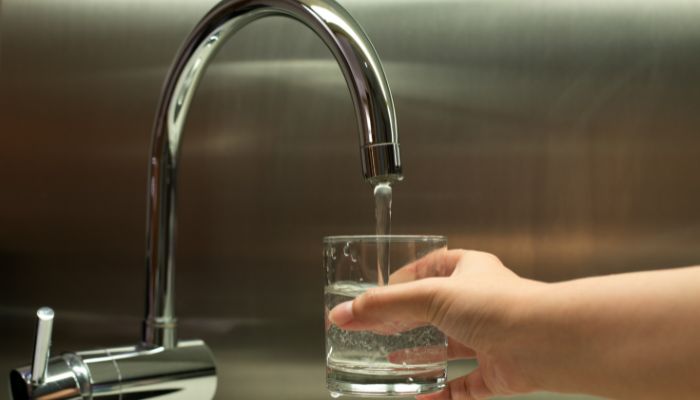Sand filtration is an affordable and effective way to filter water. It involves using a bed of sand to remove impurities and contaminants from the water.
Sand filters can remove particles that are as small as 20 microns, making them an excellent option for removing sediment and other impurities from well water, rainwater, and surface water.
What is Sand Filtration?
Sand filtration is a method of purifying water that involves passing it through a bed of sand to remove impurities. The process is simple, inexpensive, and can be implemented on a small or large scale.
Sand filtration can remove suspended particles, sediment, and microorganisms that are present in untreated water. It is commonly used in rural areas, disaster relief camps, and developing countries to provide access to safe drinking water.
Materials Required for Sand Filtration:
To set up a sand filtration system, you will need the following materials:
A container: The container should be made of non-toxic materials such as plastic, metal, or glass. The size of the container will depend on the volume of water that needs to be filtered.
Sand: The sand used for filtration should be fine-grained and free of impurities such as clay, silt, and organic matter.
You can use silica sand, quartz sand, or any other type of sand that is easily available.
Gravel: The gravel is used as a support layer for the sand. It should be of uniform size and free of impurities.
Activated Charcoal: Activated charcoal can be used to remove odor and color from the water.
It is an optional material and is not necessary for basic filtration.
How to Use Sand to Filter Water? [Steps]
Clean the container: Thoroughly clean the container with soap and water and rinse it well.
Add Gravel: Add a layer of gravel at the bottom of the container. The thickness of the gravel layer should be about 2-3 inches.
Add Sand: Add a layer of sand on top of the gravel. The thickness of the sand layer should be about 1-2 inches.
Add Activated Charcoal: If you choose to use activated charcoal, add a layer of activated charcoal on top of the sand.
The thickness of the activated charcoal layer should be about 1-2 inches.
Add Water: Slowly pour the water to be filtered into the container, making sure that it does not disturb the sand layer.
Allow the water to pass through the sand, gravel, and activated charcoal layers.
Collect the Filtered Water: Place a clean container below the outlet of the filter to collect the filtered water.
The filtered water will slowly pass through the sand layer and come out of the outlet, free of impurities.
Advantages & Limitations of Sand Filtration:
Advantages
- Sand filtration is a cost-effective method of purifying water and can be implemented on a small or large scale.
- Sand filtration removes suspended particles, sediment, and microorganisms that are present in untreated water, making it safe for consumption.
- Sand filtration does not require electricity, chemicals, or advanced equipment, making it suitable for use in rural areas, disaster relief camps, and developing countries.
Limitations
- Sand filtration cannot remove dissolved impurities such as heavy metals, salts, and minerals. If the water to be filtered contains high levels of dissolved impurities, an additional treatment method may be required.
- Sand filtration requires regular maintenance, as the sand layer can become clogged with impurities over time, reducing its effectiveness. The sand layer needs to be replaced periodically to ensure optimal filtration.
- Sand filtration may not be effective in removing certain types of pathogens such as viruses, which are smaller than the spaces between sand grains. In areas with a high risk of viral contamination, an additional treatment method may be required.
- Sand filtration may not be suitable for large-scale water treatment facilities, as it may not be able to handle the high volume of water.
FAQs
Can sand filtration be used to filter saltwater?
Sand filtration is not effective in removing salt from water. To remove salt from water, desalination methods such as reverse osmosis or distillation are required.
Is activated charcoal necessary for sand filtration?
Activated charcoal is an optional material and is not necessary for basic filtration. It can be used to remove odor and color from the water.
How long does it take for water to pass through the sand layer in a sand filtration system?
The time it takes for water to pass through the sand layer depends on various factors such as the thickness of the sand layer, the quality of water being filtered, and the volume of water. It can range from a few minutes to several hours.
Is sand filtration an eco-friendly method of water filtration?
Yes, sand filtration is an eco-friendly method of water filtration as it does not require electricity or chemicals and produces no waste.
Conclusion
Sand filtration is a simple, cost-effective, and efficient method of purifying water that can be used to provide safe drinking water in rural areas, disaster relief camps, and developing countries.
It is a reliable solution that requires minimal equipment and maintenance.

![How to Filter Water at Home? [DIY Methods for 2023]](https://bestcleaningtools.com/wp-content/uploads/2023/05/How-to-Filter-Water-at-Home-DIY-Water-Filtering-Methods.jpg)

![How to Install Frigidaire Water Filter? [Easy DIY 2023]](https://bestcleaningtools.com/wp-content/uploads/2023/05/Untitled-design-4.jpg)


![How Does a Water Filter Work? [The Journey of Water]](https://bestcleaningtools.com/wp-content/uploads/2023/05/How-Does-a-Water-Filter-Work.jpg)